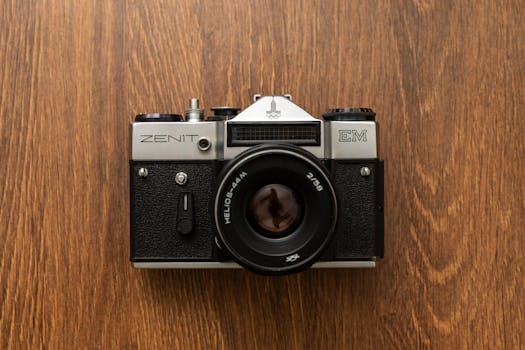Tutorials
Adjust Control Sensitivity and Improve Your Gameplay!
Adjusting your controller sensitivity is essential for effective gameplay. Learn how to customize this setting and improve your skills.
Advertisement
In video games, controller sensitivity is one of the most important factors in ensuring satisfying and effective gameplay. Adjusting this setting correctly can make all the difference, especially in action and shooter games, where precision is crucial. Improper adjustment can lead to frustrating errors, affecting player performance.
Furthermore, controller sensitivity directly influences the player's experience. Each person has a unique preference, which can vary depending on the type of game and personal style. Therefore, understanding how and why to adjust sensitivity is essential for those who want to improve their skills.
This article covers the process of adjusting controller sensitivity on different platforms, including consoles and PCs. It will cover key settings, practical tips, and recommendations for every type of player, whether beginner or expert.
What is sensitivity in game controls?
Controller sensitivity refers to how quickly the player can move their aim or character in response to a controller movement. The higher the sensitivity, the faster the response.
There are different ways to measure sensitivity, depending on the platform and controller type. This measurement can vary significantly between games, so it's important to understand the different sensitivity levels.
For first-person shooter players, sensitivity should be adjusted to allow for quick and precise movements, avoiding aiming glitches. A high sensitivity can be advantageous in some situations.
On the other hand, in strategy or RPG games, a lower sensitivity may be preferred. This allows for more precise and detailed control during actions that require greater attention to detail.
Understanding the difference and function of sensitivity is the first step. Throughout this article, you'll learn how to adjust this setting to suit your needs.
Importance of adjusting sensitivity
Adjusting sensitivity is vital to optimizing gaming performance. Well-calibrated controls increase your ability to react quickly to different situations, improving competitiveness.
Ineffective adjustments can result in frustration, wasted time, and even discouragement. Understanding the impact of sensitivity includes recognizing that each player's preferences are unique.
Additionally, a good fit can help prevent overuse-related injuries. Improperly adjusted sensitivity causes the player to use excessive movements, increasing the risk of wrist or finger discomfort.
Another reason to adjust sensitivity is to adapt it to the type of game. A player who alternates between games of different genres may need specific settings for each playstyle.
Finally, continuous improvement in gaming skills is closely related to sensitivity. Players who take the time to fine-tune their controls often become more skilled and competitive.
How to access sensitivity settings
To start adjusting sensitivity, you'll need to access the game's settings. This can usually be done directly from the main menu, in the options or preferences section.
Once in the controls section, look for the sensitivity option. It may be divided into different categories, such as camera, mouse, or joystick sensitivity. Access each one to check the options.
It's worth noting that some games offer advanced settings, allowing for more detailed tweaks. Explore these options if you have specific needs or want to experiment with custom settings.
A recommended setup is to start with default values and adjust them gradually. This avoids sudden changes that could hinder your adaptability during matches.
After making your adjustments, test them in-game to see if the new settings meet your needs. Continuous adjustments may be necessary to find the ideal sensitivity.
Types of sensitivity adjustments
There are different types of sensitivity adjustments, the most common being X-axis and Y-axis sensitivity. X-axis sensitivity refers to horizontal movement, while Y-axis sensitivity relates to vertical movement.
A balanced adjustment between the axes is essential for a smooth experience. Most players prefer both axes to have similar sensitivity, but this can vary depending on personal preference.
First-person shooter players often opt for higher X-axis sensitivity, allowing for better control during rapid movements. This makes it easier to track moving enemies.
Additionally, some games offer an "acceleration" option that adjusts sensitivity based on movement speed, providing a more responsive experience. Experiment with different combinations to see what works for you.
Controller sensitivity can also vary depending on the weapon type in shooter games. Understanding the various options helps improve performance and adapt to the game.
How to find the ideal sensitivity
The best way to find your ideal sensitivity is through practical testing. Start with the recommended settings and experiment as needed until you find a comfortable balance.
Using training mode or custom matches is a great way to test your settings. This approach allows you to adjust without pressure, ensuring you feel comfortable with each change.
Additionally, some developers offer testing modes where you can evaluate your accuracy in various situations. Take advantage of these tools to refine your tuning.
Once you find a setup that works, practice regularly. Consistency is key to getting used to it and making small improvements. Skill development shouldn't be rushed.
Finally, be open to changes over time. The ideal sensitivity may vary as you become more skilled and change your playstyle.
Sensitivity Reference Table
| Game Type | Standard Configuration (X/Y) | Recommended Configuration (X/Y) |
|---|---|---|
| FPS | 4/4 | 6/5 |
| RPG | 3/3 | 2/2 |
| MOBA | 5/5 | 7/7 |
| Sports | 5/6 | 6/7 |
| Strategy | 2/2 | 2/1 |
Tips for a more efficient adjustment
- Start with a default setting and adjust gradually.
- Use training mode to test different sensitivities.
- Use professional player setup references for inspiration.
- Join online communities to share tips and experiences.
- Don't be afraid to change as your skill evolves.
Conclusion
Adjusting the sensitivity of game controls is a crucial process and must be done patiently. There's an ideal sensitivity for each player, which varies depending on skill and game type.
By investing the time spent in this adjustment, you can see significant improvements in your gameplay. Experiment with different settings, always focus on practice, and adjust as you adapt.
Remember, the important thing is to find a setup that works for you, respecting your preferences and playstyle. The gaming journey is long and full of learning experiences.
Finally, always stay up-to-date, as new games and system updates may require new adjustments. Being prepared to adapt your setup is part of growing as a gamer.
Continue to improve your skills and enjoy the gaming experience to the fullest. Control sensitivity is only part of the journey, but it's crucial to ensuring fun and competitiveness.




